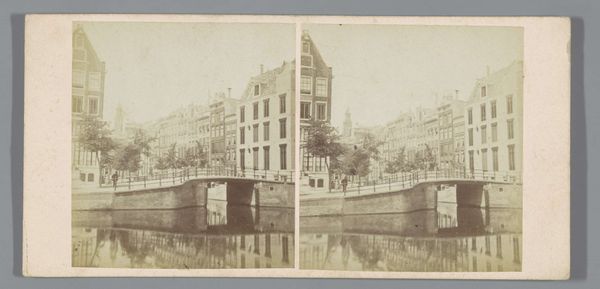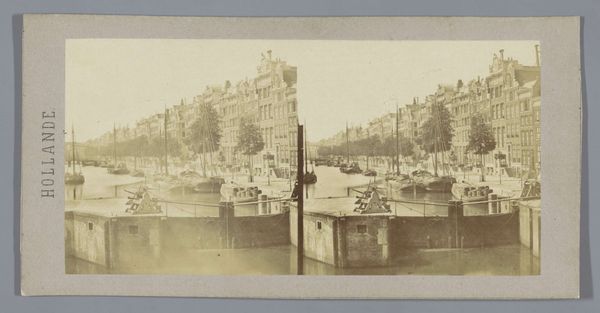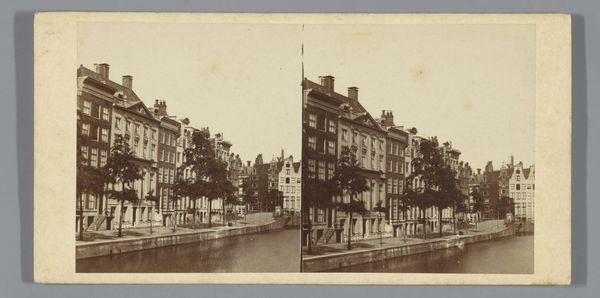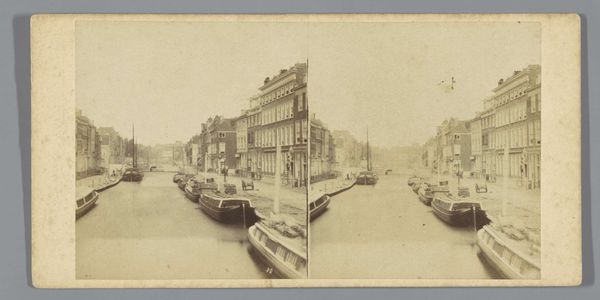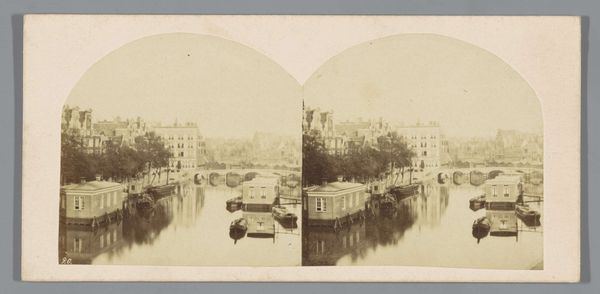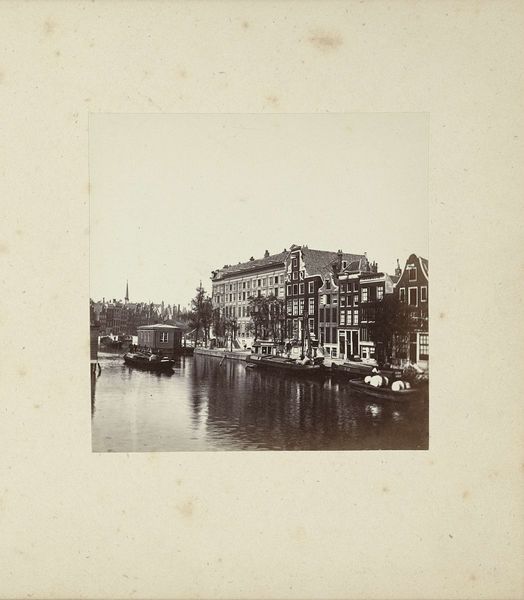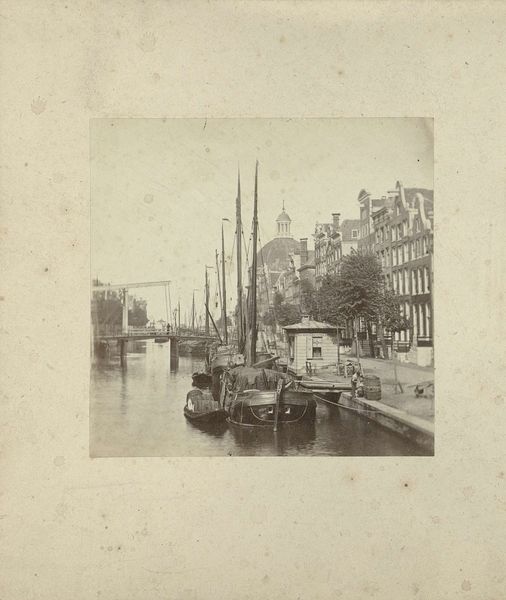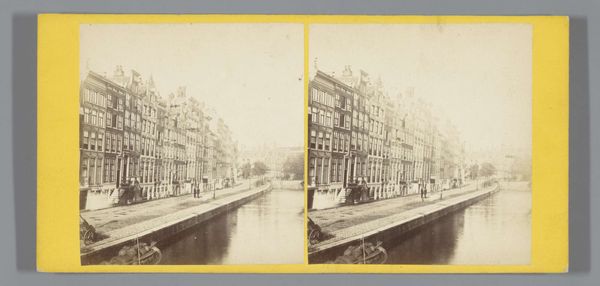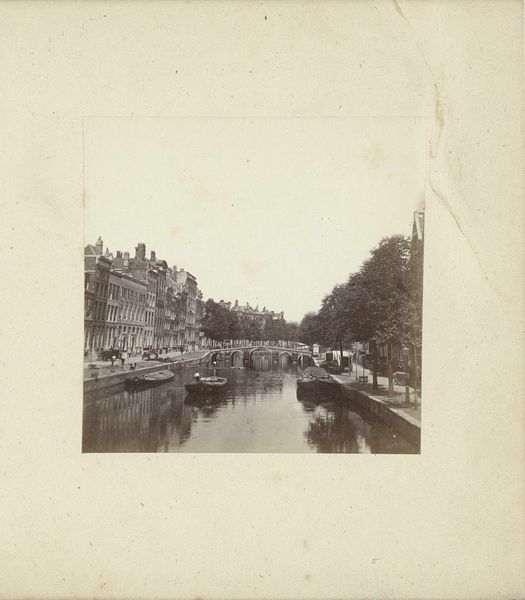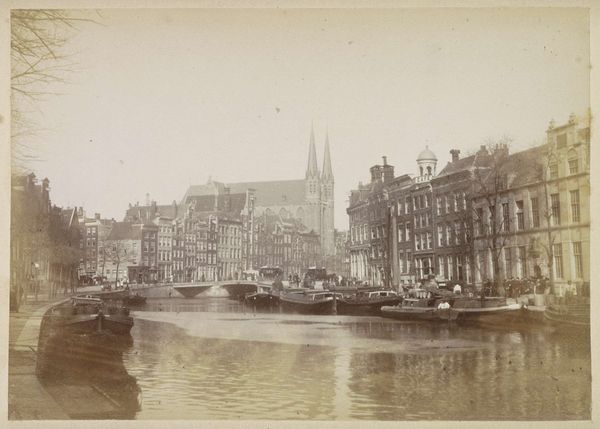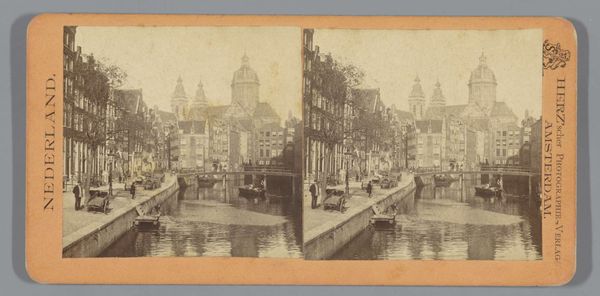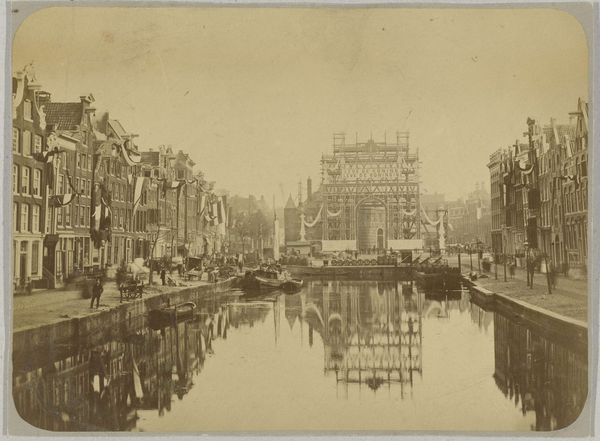
Gezicht over de Groenburgwal op de Zuiderkerk in Amsterdam, uitzicht vanaf de Staalmeestersbrug c. 1860 - 1875
0:00
0:00
photography, gelatin-silver-print
#
dutch-golden-age
#
landscape
#
photography
#
gelatin-silver-print
#
cityscape
#
realism
Dimensions: height 82 mm, width 82 mm, height 145 mm, width 234 mm
Copyright: Rijks Museum: Open Domain
Editor: This photograph, titled "Gezicht over de Groenburgwal op de Zuiderkerk in Amsterdam," offers a captivating glimpse into the past. Captured around 1860-1875 using the gelatin-silver print method, its anonymous creation adds to the mystery. What elements of production or historical context particularly stand out to you? Curator: Given its date and the anonymous label, I think we need to acknowledge the labor conditions inherent in producing photographs like this at that time. There was often a whole ecosystem of darkroom assistants, printmakers, and retouchers whose labor went uncredited. How might their contributions shape our understanding of this image beyond the named artist or photographer? Editor: That's a really interesting point. I hadn't considered the studio system and division of labor involved. The focus tends to be on the "artist," neglecting all those other hands. How might thinking about those processes impact our interpretation? Curator: It directs us to question authorship itself and focus more on the physical qualities: the materiality of the gelatin-silver print, its replicability, the social dynamics that made such a cityscape possible to produce. Consider the access to materials, training, and even the leisure time needed to create this work. These weren't universally available, highlighting existing societal power structures. Does viewing it that way shift your understanding? Editor: Definitely. It makes me think about how the image participates in a system of representation – how it's not just a neutral record but embedded in specific socio-economic conditions. Seeing the image as an artifact of a whole industrial process, and not just the vision of an artist, is powerful. Curator: Exactly. It's less about celebrating individual genius, and more about acknowledging the complex web of production, labor, and ultimately consumption, that shapes even a seemingly straightforward photograph like this one. It's in those material processes that deeper meaning can be found. Editor: I’m starting to see a photograph like this is also the product of that labor and production environment, a piece of material culture of its time, that in itself is interesting and something that needs to be considered. Curator: Absolutely. And by understanding these historical production networks, we gain a more nuanced understanding of the final work and the society that produced it.
Comments
No comments
Be the first to comment and join the conversation on the ultimate creative platform.
